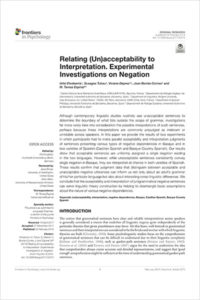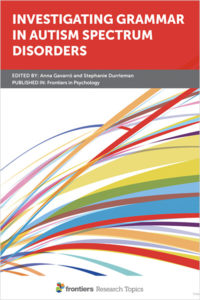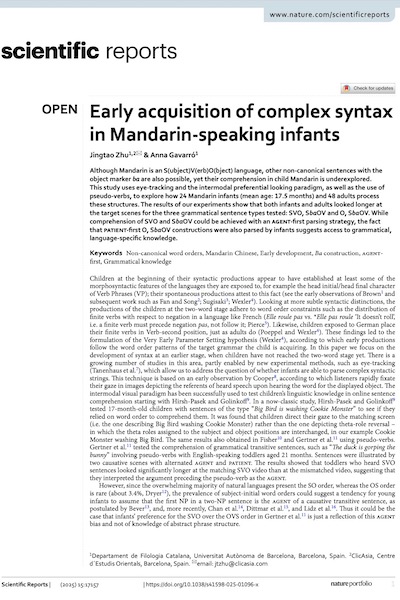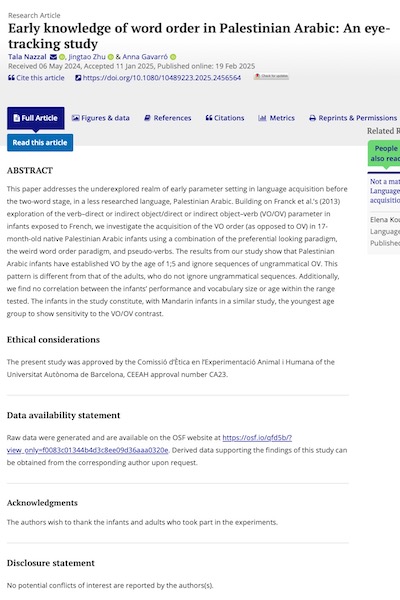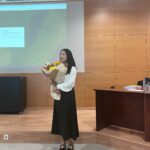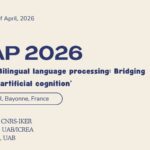27 gener, 2022
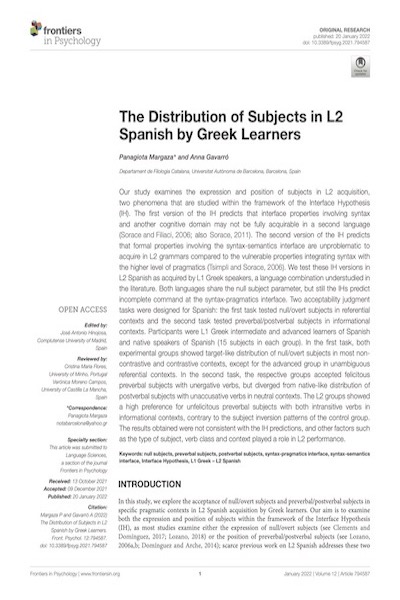
Autors:
Panagiota Margaza & Anna Gavarró
Títol:
The Distribution of Subjects in L2 Spanish by Greek LearnersEditorial: Frontiers in Psychology, Language Sciences
Col·lecció: Frontiers in PsychologyData de publicació: 20 gener 2022
Text completOur study examines the expression and position of subjects in L2 acquisition, two phenomena that are studied within the framework of the Interface Hypothesis (IH). The first version of the IH predicts that interface properties involving syntax and another cognitive domain may not be fully acquirable in a second language (Sorace and Filiaci, 2006; also Sorace, 2011). The second version of the IH predicts that formal properties involving the syntax-semantics interface are unproblematic to acquire in L2 grammars compared to the vulnerable properties integrating syntax with the higher level of pragmatics (Tsimpli and Sorace, 2006). We test these IH versions in L2 Spanish as acquired by L1 Greek speakers, a language combination understudied in the literature. Both languages share the null subject parameter, but still the IHs predict incomplete command at the syntax-pragmatics interface. Two acceptability judgment tasks were designed for Spanish: the first task tested null/overt subjects in referential contexts and the second task tested preverbal/postverbal subjects in informational contexts. Participants were L1 Greek intermediate and advanced learners of Spanish and native speakers of Spanish (15 subjects in each group). In the first task, both experimental groups showed target-like distribution of null/overt subjects in most non-contrastive and contrastive contexts, except for the advanced group in unambiguous referential contexts. In the second task, the respective groups accepted felicitous preverbal subjects with unergative verbs, but diverged from native-like distribution of postverbal subjects with unaccusative verbs in neutral contexts. The L2 groups showed a high preference for unfelicitous preverbal subjects with both intransitive verbs in informational contexts, contrary to the subject inversion patterns of the control group. The results obtained were not consistent with the IH predictions, and other factors such as the type of subject, verb class and context played a role in L2 performance.
Títols de la col·lecció / Also in this series:
21 gener, 2025
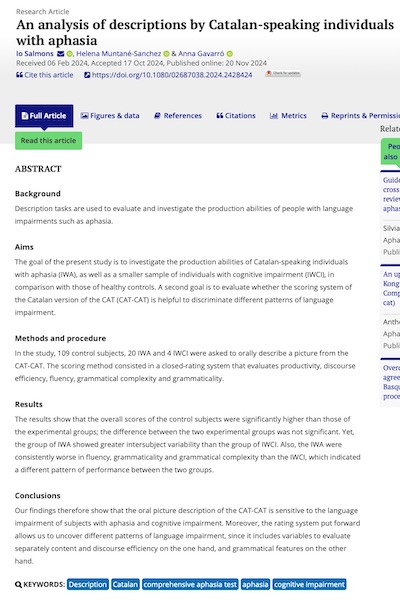
Autors:
Salmons, Muntané-Sanchez, & Gavarró
Títol:
An analysis of descriptions by Catalan-speaking individuals with aphasiaEditorial: Aphasiology
Data de publicació: 20-11-2024
Més informacióBackground
Description tasks are used to evaluate and investigate the production abilities of people with language impairments such as aphasia.
Aims
The goal of the present study is to investigate the production abilities of Catalan-speaking individuals with aphasia (IWA), as well as a smaller sample of individuals with cognitive impairment (IWCI), in comparison with those of healthy controls. A second goal is to evaluate whether the scoring system of the Catalan version of the CAT (CAT-CAT) is helpful to discriminate different patterns of language impairment.
Methods and procedure
In the study, 109 control subjects, 20 IWA and 4 IWCI were asked to orally describe a picture from the CAT-CAT. The scoring method consisted in a closed-rating system that evaluates productivity, discourse efficiency, fluency, grammatical complexity and grammaticality.
Results
The results show that the overall scores of the control subjects were significantly higher than those of the experimental groups; the difference between the two experimental groups was not significant. Yet, the group of IWA showed greater intersubject variability than the group of IWCI. Also, the IWA were consistently worse in fluency, grammaticality and grammatical complexity than the IWCI, which indicated a different pattern of performance between the two groups.
Conclusions
Our findings therefore show that the oral picture description of the CAT-CAT is sensitive to the language impairment of subjects with aphasia and cognitive impairment. Moreover, the rating system put forward allows us to uncover different patterns of language impairment, since it includes variables to evaluate separately content and discourse efficiency on the one hand, and grammatical features on the other hand.
3 setembre, 2024
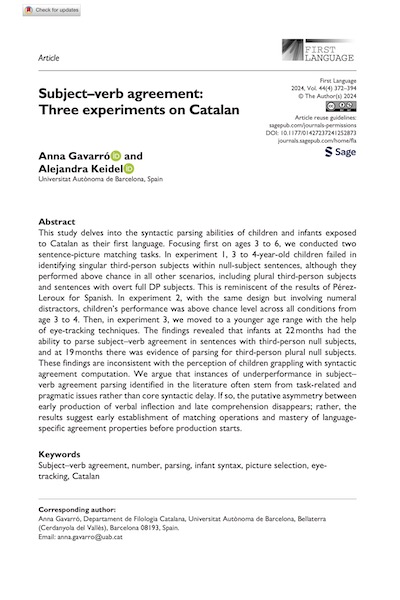
Autors:
Anna Gavarró & Alejandra Keidel
Títol:
Subject-verb agreement: Three experiments on CatalanEditorial: First Language (Sage Journals)
Data de publicació: Agost, 2024
Pàgines: 22 Text completThis study delves into the syntactic parsing abilities of children and infants exposed to Catalan as their first language. Focusing first on ages 3 to 6, we conducted two sentence-picture matching tasks. In experiment 1, 3 to 4-year-old children failed in identifying singular third-person subjects within null-subject sentences, although they performed above chance in all other scenarios, including plural third-person subjects and sentences with overt full DP subjects. This is reminiscent of the results of Pérez-Leroux for Spanish. In experiment 2, with the same design but involving numeral distractors, children’s performance was above chance level across all conditions from age 3 to 4. Then, in experiment 3, we moved to a younger age range with the help of eye-tracking techniques. The findings revealed that infants at 22 months had the ability to parse subject–verb agreement in sentences with third-person null subjects, and at 19 months there was evidence of parsing for third-person plural null subjects. These findings are inconsistent with the perception of children grappling with syntactic agreement computation. We argue that instances of underperformance in subject–verb agreement parsing identified in the literature often stem from task-related and pragmatic issues rather than core syntactic delay. If so, the putative asymmetry between early production of verbal inflection and late comprehension disappears; rather, the results suggest early establishment of matching operations and mastery of language-specific agreement properties before production starts.


